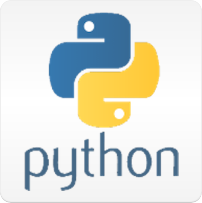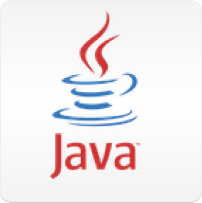⏲️ Duration : 3h30 hours
🎓 Level Beginner to Intermediate
- LAB1 - Initialize your environment
- LAB2 - First CQL Queries
- LAB3 - Data Modeling
- LAB4 - Coding
- LAB5 - Stargate APIS
Note: Datastax Astra is a cloud-native, fully managed database-as-a-service (DBaaS) based on Apache Cassandra. It provides a scalable, performant and highly available database solution without the operational overhead of managing Cassandra clusters. Astra supports both SQL and NoSQL APIs, and includes features like backup and restore, monitoring and alerting, and access control. It enables developers to focus on application development while the database infrastructure is managed by Datastax.
✅ 1.1.a- Access https://astra.datastax.com and register withGoogleorGithubaccount
-
✅ 1.2.aLocateSettings(#1) in the menu on the left, thenToken Management(#2) -
✅ 1.2.bSelect the roleOrganization Administratorbefore clicking[Generate Token]
✅ 1.2.c- Copy your token in the clipboard. With this token we will now create what is needed for the training.
Note: Gitpod is a cloud-based integrated development environment (IDE) that allows developers to build, test and run applications directly in their web browser. It provides preconfigured dev environments for GitHub projects, so developers can start coding immediately without setting up local environment. Gitpod saves time and streamlines the development process.
✅ 1.3.a↗️ Right Click and select open as a new Tab...
Note: The Astra CLI is a command-line interface (CLI) tool for managing Apache Cassandra databases hosted on Datastax Astra. It allows developers to perform tasks like creating and managing databases, executing Cassandra queries, and managing security and access control. The Astra CLI simplifies database management and provides an alternative to the Astra web interface, enabling automation and integration with other tools and workflows.
✅ 1.4.aLocate the terminal calledsetupand check that the CLI is available
astra --version
🖥️
output$ astra --version 0.2.1
✅ 1.4.bTrigger the setup command
astra setup
🖥️
output_____ __ / _ \ _______/ |_____________ / /_\ \ / ___/\ __\_ __ \__ \ / | \\___ \ | | | | \// __ \_ \____|__ /____ > |__| |__| (____ / \/ \/ \/ Version: 0.2.1 ----------------------- --- SETUP --- ----------------------- $ Enter an Astra token:
✅ 1.4.cProvide your token as asked (starting witg AstraCS:..)
🖥️
output[OK] Configuration has been saved. [OK] Enter 'astra help' to list available commands.
✅ 1.4.dList your existing Users.
astra user list🖥️
output+--------------------------------------+-----------------------------+---------------------+ | User Id | User Email | Status | +--------------------------------------+-----------------------------+---------------------+ | b665658a-ae6a-4f30-a740-2342a7fb469c | cedrick.lunven@datastax.com | active | +--------------------------------------+-----------------------------+---------------------+
✅ 1.5.aCreate databaseworkshopswith keyspacesensor_data
astra db create workshops -k sensor_data --if-not-exist🖥️
Output[ INFO ] - Database 'workshops' already exist. Connecting to database. [ INFO ] - Database 'workshops' has status 'MAINTENANCE' waiting to be 'ACTIVE' ... [ INFO ] - Database 'workshops' has status 'ACTIVE' (took 7983 millis)
| Chunk | Description |
|---|---|
db create |
Operation executed create in group db |
workshops |
Name of the database, our argument |
-k sensor_data |
Name of the keyspace, a db can contains multiple keyspaces |
--if-not-exist |
Flag for itempotency creating only what if needed |
Note: If the database already exist but has not been used for while the status will be
HIBERNATED. The previous command will resume the db an create the new keyspace but it can take about a minute to execute.[OK] Resuming Database 'com.dtsx.astra.sdk.db.domain.Database@406005b3' ... [INFO] Database 'workshops' has status 'RESUMING' waiting to be 'ACTIVE' ... [INFO] Database 'workshops' has status 'ACTIVE' (took 41466 millis) [INFO] Keyspace 'workshops' already exists. Connecting to keyspace. [OK] Database 'workshops' is ready.
✅ 1.5.bCheck the status of databaseworkshops
astra db status workshops🖥️
output[ INFO ] - Database 'workshops' has status 'ACTIVE'
✅ 1.5.cGet the information for your database including the keyspace list
astra db get workshops🖥️
output+------------------------+-----------------------------------------+ | Attribute | Value | +------------------------+-----------------------------------------+ | Name | workshops | | id | 906ef2f2-07d0-472c-add6-fe719cf61d02 | | Status | ACTIVE | | Default Cloud Provider | GCP | | Default Region | us-east1 | | Default Keyspace | sensor_data | | Creation Time | 2023-02-20T12:06:21Z | | | | | Keyspaces | [0] sensor_data | | | | | Regions | [0] us-east1 | +------------------------+-----------------------------------------+
astra db cqlsh workshops -f /workspace/workshop-swinburne/initialize.cql
Note: The command above will create a few tables for you to learn about Create, read update, delete. We will go into more details of a tables structure in the
lab3.
astra db cqlsh workshops -k sensor_data
🖥️
Output[INFO] Downloading Cqlshell, please wait... [INFO] Installing archive, please wait... [INFO] Secure connect bundles have been downloaded. [INFO] Cqlsh is starting, please wait for connection establishment... Connected to cndb at 127.0.0.1:9042. [cqlsh 6.8.0 | Cassandra 4.0.0.6816 | CQL spec 3.4.5 | Native protocol v4] Use HELP for help. token@cqlsh:sensor_data>
INSERT INTO networks
(bucket,name,description,region,num_sensors)
VALUES ('all','forest-net',
'forest fire detection network',
'south',3);
INSERT INTO networks
(bucket,name,description,region,num_sensors)
VALUES ('all','volcano-net',
'volcano monitoring network',
'north',2); Note: in the following, we are using
MAP<>which lets you define you our key/value mapping, thereby adding a bit of flexibility -- Cassandra Data models are strongly typed.
INSERT INTO sensors_by_network
(network,sensor,latitude,longitude,characteristics)
VALUES ('forest-net','s1001',30.526503,-95.582815,
{'accuracy':'medium','sensitivity':'high'});
INSERT INTO sensors_by_network
(network,sensor,latitude,longitude,characteristics)
VALUES ('forest-net','s1002',30.518650,-95.583585,
{'accuracy':'medium','sensitivity':'high'});
INSERT INTO sensors_by_network
(network,sensor,latitude,longitude,characteristics)
VALUES ('forest-net','s1003',30.515056,-95.556225,
{'accuracy':'medium','sensitivity':'high'});
INSERT INTO sensors_by_network
(network,sensor,latitude,longitude,characteristics)
VALUES ('volcano-net','s2001',44.460321,-110.828151,
{'accuracy':'high','sensitivity':'medium'});
INSERT INTO sensors_by_network
(network,sensor,latitude,longitude,characteristics)
VALUES ('volcano-net','s2002',44.463195,-110.830124,
{'accuracy':'high','sensitivity':'medium'}); INSERT INTO sensors_by_network
(network,sensor,latitude,longitude,characteristics)
VALUES ('forest-net','s1001',30.526503,-95.582815,
{'accuracy':'medium','sensitivity':'high'});
INSERT INTO sensors_by_network
(network,sensor,latitude,longitude,characteristics)
VALUES ('forest-net','s1002',30.518650,-95.583585,
{'accuracy':'medium','sensitivity':'high'});
INSERT INTO sensors_by_network
(network,sensor,latitude,longitude,characteristics)
VALUES ('forest-net','s1003',30.515056,-95.556225,
{'accuracy':'medium','sensitivity':'high'});
INSERT INTO sensors_by_network
(network,sensor,latitude,longitude,characteristics)
VALUES ('volcano-net','s2001',44.460321,-110.828151,
{'accuracy':'high','sensitivity':'medium'});
INSERT INTO sensors_by_network
(network,sensor,latitude,longitude,characteristics)
VALUES ('volcano-net','s2002',44.463195,-110.830124,
{'accuracy':'high','sensitivity':'medium'}); Now that we've inserted a set of rows (two sets, to be precise), let's take a look at how to read the data back out. This is done with a SELECT statement. In its simplest form we could just execute a statement like the following **cough **cough:
⚠️ this is a first sample, select * with no WHERE is almost forbidden as will perform a full scan of your cluster
SELECT * FROM networks; name | description | region
-------------+-------------------------------+--------
forest-net | forest fire detection network | south
volcano-net | volcano monitoring network | north
or
SELECT * FROM sensors_by_network;📗 Expected output
token@cqlsh:sensor_data> SELECT * FROM sensors_by_network;
network | sensor | characteristics | latitude | longitude
-------------+--------+-----------------------------------------------+-----------+-------------
forest-net | s1001 | {'accuracy': 'medium', 'sensitivity': 'high'} | 30.526503 | -95.582815
forest-net | s1002 | {'accuracy': 'medium', 'sensitivity': 'high'} | 30.518650 | -95.583585
forest-net | s1003 | {'accuracy': 'medium', 'sensitivity': 'high'} | 30.515056 | -95.556225
volcano-net | s2001 | {'accuracy': 'high', 'sensitivity': 'medium'} | 44.460321 | -110.828151
volcano-net | s2002 | {'accuracy': 'high', 'sensitivity': 'medium'} | 44.463195 | -110.830124
You may have noticed my coughing fit a moment ago. Even though you can execute a SELECT statement with no partition key defined, this is NOT something you should do when using Apache Cassandra. We are doing it here for illustration purposes only and because our whole dataset is just a handful of values.
Given the data we inserted earlier, a more proper statement would be something like (while we are at it, we also explicitly specify which columns we want back):
SELECT sensor, characteristics, latitude, longitude
FROM sensors_by_network
WHERE network = 'forest-net';📗 Expected output
token@cqlsh:sensor_data> SELECT sensor, characteristics, latitude, longitude
... FROM sensors_by_network
... WHERE network = 'forest-net';
sensor | characteristics | latitude | longitude
--------+-----------------------------------------------+-----------+------------
s1001 | {'accuracy': 'medium', 'sensitivity': 'high'} | 30.526503 | -95.582815
s1002 | {'accuracy': 'medium', 'sensitivity': 'high'} | 30.518650 | -95.583585
s1003 | {'accuracy': 'medium', 'sensitivity': 'high'} | 30.515056 | -95.556225
The key is to ensure we are always selecting by some partition key at a minimum, so to avoid the dreaded full-cluster scans which yield performances that are generally unacceptable in production.
Ok, with that out of the way we can READ the data from the other table as well - remember we INSERTed on both tables?
📘 Commands to execute
SELECT * FROM temperatures_by_sensor;
SELECT timestamp, value
FROM temperatures_by_sensor
WHERE sensor='s1002'
AND date='2020-07-05';(again, in the second SELECT we specify some columns - it is something we may want to do in most cases).
📗 Expected output
token@cqlsh:sensor_data> select timestamp, value from temperatures_by_sensor where sensor='s1002' and DATE='2020-07-05';
timestamp | value
---------------------------------+-------
2020-07-05 12:59:59.000000+0000 | 99
2020-07-05 12:00:01.000000+0000 | 100
2020-07-05 00:59:59.000000+0000 | 82
2020-07-05 00:00:01.000000+0000 | 82
Once you execute the above SELECT statements you should see something like the expected output above. We have now READ the data we INSERTED earlier. Awesome job!
📘 Commands to execute
SELECT * FROM temperatures_by_sensor
WHERE sensor='s1002';📗 Expected output
Suprise !
CREATE TABLE IF NOT EXISTS networks (
bucket TEXT,
name TEXT,
description TEXT,
region TEXT,
num_sensors INT,
PRIMARY KEY ((bucket), name)
);
CREATE TABLE IF NOT EXISTS temperatures_by_network (
network TEXT,
week DATE,
date_hour TIMESTAMP,
sensor TEXT,
avg_temperature FLOAT,
latitude DECIMAL,
longitude DECIMAL,
PRIMARY KEY ((network,week),date_hour,sensor)
) WITH CLUSTERING ORDER BY (date_hour DESC, sensor ASC);
CREATE TABLE IF NOT EXISTS sensors_by_network (
network TEXT,
sensor TEXT,
latitude DECIMAL,
longitude DECIMAL,
characteristics MAP<TEXT,TEXT>,
PRIMARY KEY ((network),sensor)
);
CREATE TABLE IF NOT EXISTS temperatures_by_sensor (
sensor TEXT,
date DATE,
timestamp TIMESTAMP,
value FLOAT,
PRIMARY KEY ((sensor,date),timestamp)
) WITH CLUSTERING ORDER BY (timestamp DESC);-- Q1 (note 'all' is the only partition key in this table)
SELECT name, description, region, num_sensors
FROM networks
WHERE bucket = 'all';
-- Q2
SELECT date_hour, avg_temperature, latitude, longitude, sensor
FROM temperatures_by_network
WHERE network = 'forest-net'
AND week = '2020-07-05'
AND date_hour >= '2020-07-05'
AND date_hour < '2020-07-07';
-- Q3
SELECT *
FROM sensors_by_network
WHERE network = 'forest-net';
-- Q4
SELECT timestamp, value
FROM temperatures_by_sensor
WHERE sensor = 's1003'
AND date = '2020-07-06';To close cqlsh and get back to the shell prompt.
exit
Besides the "Client ID" and the "Client Secret" from the Token, the drivers also need the "Secure Connect Bundle" zipfile to work (it contains proxy and routing information as well as the necessary certificates). To download it:
astra db download-scb -f secure-connect-workshops.zip workshops
You can check it has been saved with ls *.zip.
Copy the template dot-env and edit it with:
cp .env.sample .env ; gp open .env
Replace Client Secret strings from the database Token.
Finally, source the .env file:
source .envChoose your Language:
✅ 5.1.a- Open Connect TAB
✅ 5.1.a- Open Swagger UI
- ✅
5.2.aList keyspaces
-
Click
Try it out -
Click on
Execute -
✅
5.2.bList Tables
-
Click
Try it out -
keyspace:
sensor_data -
Click on
Execute -
✅
5.2.cRead multiple rows
-
keyspaceName:
sensor_data -
tableName:
users -
Click Execute
-
Notice how now you can only limited return fields
-
fields:
firstname, lastname
The application will use the GraphQL Api to interact with the database, let us have a look at this API.
✅ 5.3.a- Locate Playground, in theConnectTab by scrolling down and clicking graphQL
✅ 5.3.b- There click on theGraphQL Playgroundlink.
✅ 5.3.c- List Keyspaces in dbworkshop
In the left part of the screen enter the following request and validate with the Big triangle button in the middle (play)
query getAllKeyspaces{
keyspaces {
name
}
}✅ 5.4.a- Display documentation by click on theDOCSpanel totally on the right of the playground.
✅ 5.4.b- Display the table list of the keyspacesensor_data
query getSensporDataKeyspaceTables {
keyspace(name:"sensor_data") {
name
tables {
name
columns {
name
kind
type {
basic
info {
name
}
}
}
}
}
}✅ 5.4.d- Open second tab
In the url change system by sensor_data
✅ 5.4.d- List content of tablenetwork,
query getNetworks {
networks(value:{}) {
values {
name
}
}
}
Output{ "data": { "networks": { "values": [ { "name": "forest-net" }, { "name": "volcano-net" } ] } } }















